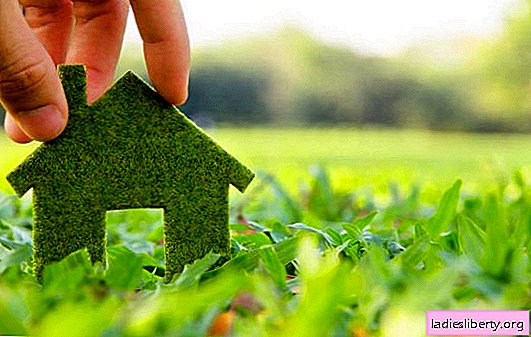
Did the kid complain too often about headache and fatigue? Try to measure his pressure. And do not think that only with a grandmother it can be elevated. Significant deviations from normal age-related indicators of blood pressure in the crumbs can signal rather serious problems in his fragile body.
What is blood pressure?
Blood passing through numerous blood vessels exerts significant pressure on their elastic walls. The strength of its effect depends on the size of the vessel - the larger it is, the more significant the pressure is created inside it. The normal indicators of blood pressure are considered to be pressure in the brachial artery, in the area of which it is measured. For these purposes, a modern analogue of the well-known device called the sphygmomanometer, which was proposed for use in 1905 by the Russian surgeon Korotkov, serves. The unit of measurement is the pressure of one millimeter of mercury column, which is equal to 0.00133 bar.
Blood pressure is not the same throughout the day and depends on many factors - the elasticity of the walls of the vessels, the intensity of the heart contractions and the active resistance that the vessels exert in the blood stream. The pressure values are also influenced by the amount of blood contained in the body and its viscosity. Pressure serves to successfully move blood through the capillaries and ensure the normal course of metabolic processes. Blood pressure is divided into systolic and diastolic.
What is systolic pressure?
Systole is the status of the heart muscle at the moment when it contracts, diastole - during relaxation. When the ventricle contracts, a significant amount of blood enters the aorta, which stretches its walls. At the same time, the walls resist, the blood pressure increases and reaches its maximum value. It is this indicator of his called systolic.
What is diastolic pressure
After a period of contraction of the heart muscle, the aortic valve closes reliably, and its walls begin to gradually displace the resulting blood volume. It slowly spreads through the capillaries, while losing pressure. By the end of this stage, diastole, its indicator decreases to the minimum figures, which are considered to be diastolic pressure. There is another interesting indicator that sometimes helps doctors determine the cause of the disease - the difference between systolic and diastolic pressure. It is usually 40-60 mm Hg and is called pulse pressure.
How to measure the pressure of the child
Sometimes the doctor prescribes control of the baby’s blood pressure in case of violations in the body’s activity, and sometimes it is done for prevention. On sale there are reliable and convenient electronic blood pressure monitors, which are not difficult to cope with. It is important to use only age-appropriate baby cuffs. For children up to a year, the width of the inner chamber from 3 to 5 centimeters is used.
It is best to carry out the procedure in the morning, after the baby woke up. The baby should lie, the palm of the hand leans up and to the side and is at the level of the heart. The cuff of the device is superimposed two to three centimeters above the elbow, between the mother’s finger should pass freely between it and the baby’s handle. A phonendoscope should be attached to the ulnar fossa, where the pulse is clearly felt. Having closed the valve, you need to pump up air until the pulse disappears. After that, slightly open the valve so that the air comes out gradually, and observe the scale. The first sound heard will determine systolic pressure, the last - diastolic. Mom should carefully record the evidence so that the doctor can determine the slightest deviations from the norm.
What pressure should be normal in children under 1 year old
Vascular elasticity and a developed network of capillaries are the main reasons that blood pressure in babies is much lower than that of fathers and mothers. The smaller the child’s age, the lower the tonometer reading. In a newborn baby, they amount to 60-96 / 40-50 mm Hg, but already at the end of the first month of life they reach 80-112 / 40-74 millimeters of mercury. Throughout the first year after birth, blood pressure gradually increases, and by twelve months its average value, depending on the fatness and growth of the crumbs, ranges from 80/40 to 112/74 mm Hg. This rapid growth is associated with an increase in vascular tone.
Mom can easily determine on her own whether the blood pressure of her child corresponds to the established norms. For this, a simple formula is used - (76 + 2 n), where n denotes the number of months a baby lived. But it is much more convenient to use the table below, where the acceptable indicators are indicated according to the age of the child.
Do not be upset if after the first measurement there is a discrepancy with the average age indicators. Indeed, many factors influence the numbers of blood pressure - weather, atmospheric pressure, sleep, a feeling of pain, and crying. In a dream, for example, pressure decreases, during crying and gymnastics rises, etc. In addition, to obtain a reliable result, it is important that the procedure is carried out correctly:
1. A baby cuff is used to measure blood pressure in babies. The width of its inner chamber for newborns should be three centimeters, for older babies - five.
2. Research is best done three times, spacing 3-4 minutes between them. The minimum numbers and will be considered the most correct.
3. In crumbs up to a year old, pressure is measured exclusively in the supine position. In very small crumbs, in the absence of pronounced symptoms of a malfunction of the cardiovascular system, usually only systolic pressure is established, determined by feeling.
What pressure should be normal in children in 2-3 years
Most quickly, the child's blood pressure increases in the first year of life, then its growth becomes unhurried and smooth. At the age of 2-3 years, the average age indicators of systolic pressure are 100-112 mm Hg, and diastolic - from 60 to 74 mm Hg. It is generally accepted that pressure is elevated if mommy did not just detect an increase in numbers for a given age group using the table, but this increase persists for three weeks. No need to be upset if the excess was a one-time. Normal indicators can be calculated by the formula. For children older than a year, systolic pressure is (90 + 2n), and distal (60 + n), in both formulas n is the number of years the baby.
What pressure should be normal in children aged 3-5
If you pay attention to the table, it can be noted that at the age of three to five years, the dynamics of an increase in blood pressure slows down. Systolic pressure in this age period is 100-116 mm RT. Art., and diastolic values range from 60 to 76 mmHg. It should be borne in mind that during the day the tonometer readings can be different - during the day and evening the pressure reaches its maximum values, then it gradually decreases and at night, from 1 to 5 hours, it is minimal.
What pressure should be normal in children aged 6-9 years
As can be clearly seen from the table, the minimum values of normal diastolic and systolic pressure remain at the same level, only their maximum values expand slightly. The norm of blood pressure for children from 6 to 9 years old is considered to be 100-122 / 60-78 mm Hg. At this age, deviations from the average indicators are quite possible due to admission to school, a decrease in physical activity, and an increase in emotional stress. If a child complains of frequent headaches, comes home from school broken and tired - this is an occasion to observe how his blood pressure behaves.
What pressure should be normal in children aged 10-12
Age-related physiological characteristics, the onset of puberty can lead to changes in blood pressure at this age. This is especially true for girls who ripen a little earlier than their peers in the male article. Although according to the table, the average normal blood pressure is from 110/70 to 126/82 mm Hg, doctors consider it possible to increase the upper indicators to 120. The type of addition of children can affect the readings of the tonometer. For example, tall and thin girls with an asthenic body type almost always have slightly lowered blood pressure.
What pressure should be normal in children aged 13-15
The turbulent teenage years present many surprises. Stressful situations, a long stay behind a computer monitor, significantly increased workloads in an educational institution - against the background of hormonal changes and the accompanying functional disorders, these factors can cause both an increase (juvenile hypertension) and a decrease in blood pressure. Normally, these indicators are 110-70 / 136-86 mm Hg, with pressure surges, palpitations, fainting, increased or decreased heart rate, severe headache, dizziness are possible. With age, troubles are likely to pass, however, it is better not to ignore the doctor’s consultations in order to thoroughly find out their cause and avoid future problems.

If the child’s blood pressure is low, causes and treatment
Lowering blood pressure is called hypotension. Physiological decline observed at different times of the day can occur in completely healthy children after eating or training, being in a stuffy atmosphere, due to a hereditary predisposition. It does not affect well-being, and children do not complain. However, approximately 10% of our children have pathological hypotension, which may be caused by the following factors:
- frequent colds and infections;
- lack of physical activity;
- birth injury;
- mental overload and stress;
- exorbitant physical activity.
Symptoms may vary, depending on the cause of the abnormal condition. The most common ones include the following:
- fatigue;
- pressing headache;
- aching sensations in the heart after physical exertion;
- tearfulness, resentment, frequent change of mood;
- dizziness;
- sweating, wet palms.
A child with such manifestations must be shown to the doctor, as the cause of this condition can be some ailments - various heart diseases, diabetes, anemia and lack of vitamins, head injuries and a reaction to certain medications. Only after examination, consultation with a neurologist and establishing the cause of hypotension, the doctor will prescribe the necessary treatment. Detection of the underlying disease will allow, first of all, to carry out its drug treatment. You can follow the advice of traditional medicine only with the consent of the doctor, but mommy can help her child. To do this, unconditionally comply with the following recommendations:
- calm in the house;
- compliance with the regime;
- restriction of sitting at the computer and at the TV, especially before bedtime;
- physical overload is not permissible, but activity is welcome - swimming, horseback riding, leisurely walking are very useful;
- good nutrition with an increased consumption of vegetables and fruits, dairy products. Useful strong sweet tea with lemon;
- a contrast shower, which has a great tonic effect. If desired, gradually accustom a child to it is quite possible.
If the child’s blood pressure is increased, the causes and treatment
Not less than lowering blood pressure, arterial hypertension also occurs in children, especially in adolescence. The reasons may include hormonal changes in the body, lack of sleep, stress, physical and psychological stress. However, sometimes they are not so harmless - secondary hypertension can accompany renal or endocrine pathology, brain damage, poisoning, and vascular tone disorders. Only a doctor can identify the causes, and mom is required to follow the above recommendations. They are aimed not at increasing or lowering blood pressure, but at its reliable stabilization.











